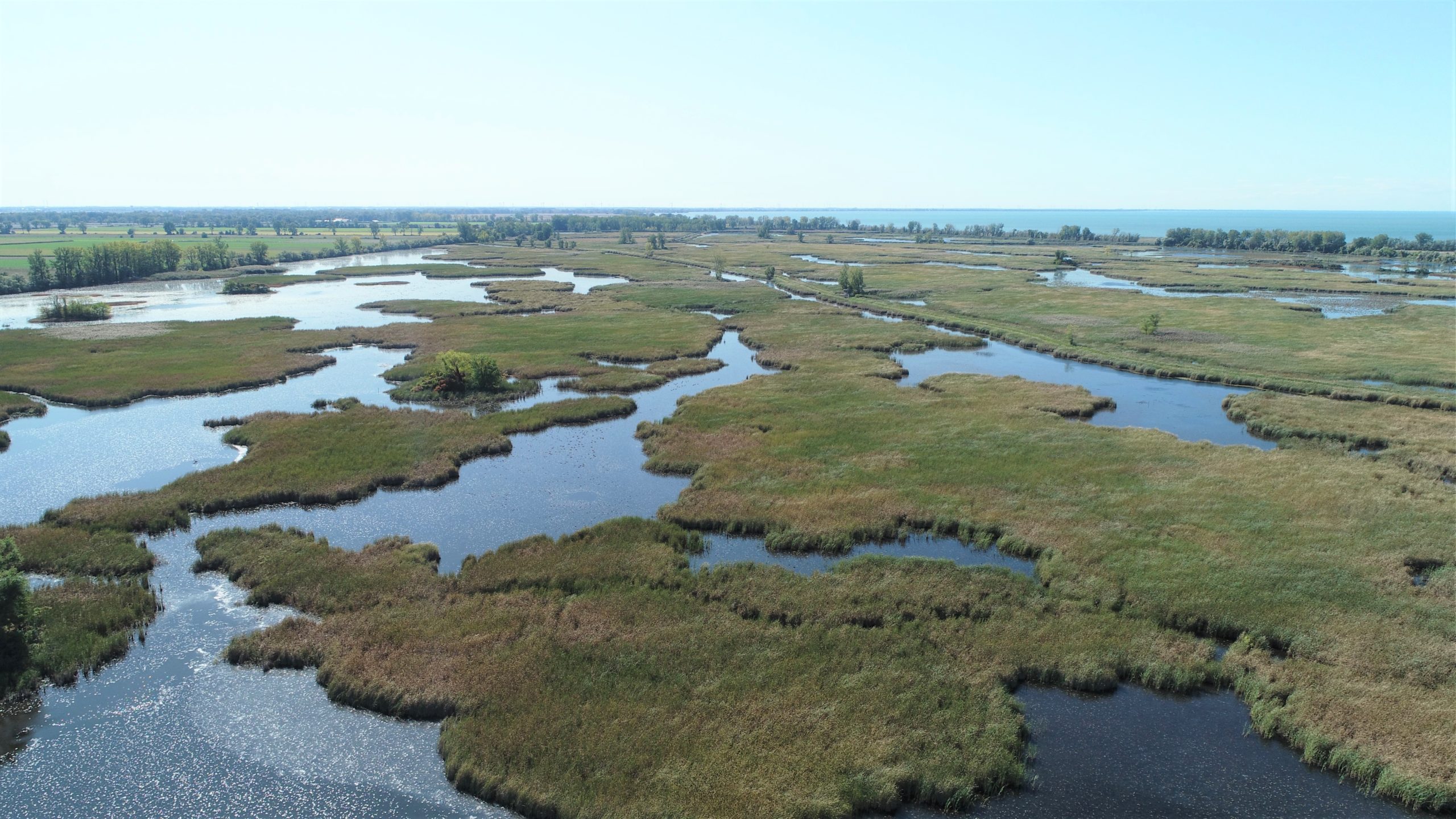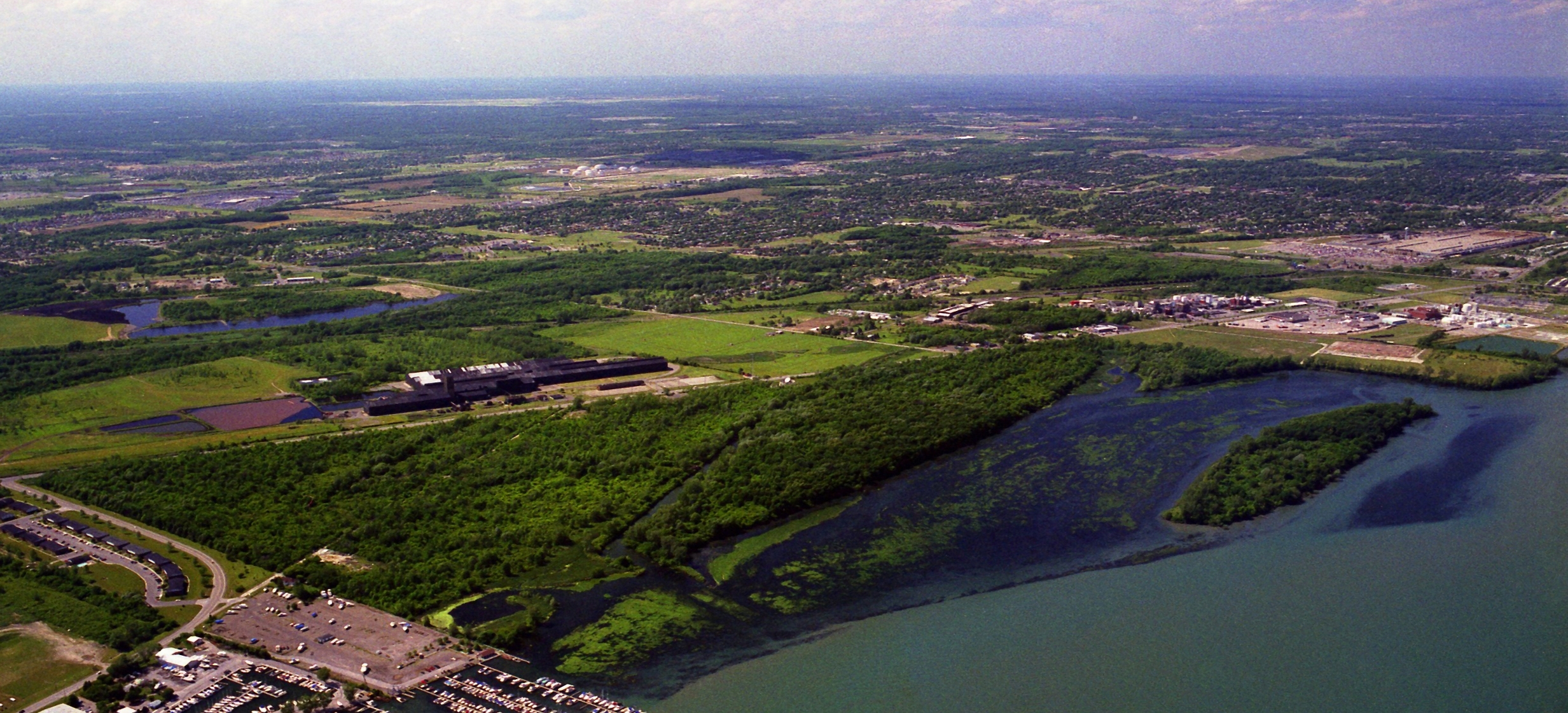
Great Lakes Moment is a monthly column written by Great Lakes Now Contributor John Hartig. Publishing the author’s views and assertions does not represent endorsement by Great Lakes Now or Detroit Public Television.
Most regions throughout the world would be happy to have one wetland of international importance, but the region that includes southeast Michigan and southwest Ontario is notable for having three. The three Wetlands of International Importance in southeast Michigan and southwest Ontario are ecological gems in a necklace called the Huron-Erie Corridor.
In 1971, in the small Iranian city of Ramsar, which is nestled between the Alborz mountains and the Caspian coast, representatives of 18 nations signed a remarkable treaty called the Ramsar Convention on Wetlands. It is the oldest of the modern global intergovernmental environmental agreements.
This year marks the 50th anniversary of the Ramsar Convention on Wetlands, which commits countries to the conservation and “wise use” of wetlands, list and manage special sites called Wetlands of International Importance, and cooperate on transboundary wetlands and species. There are currently 2,429 Ramsar Wetlands of International Importance covering more than 983,000 acres in over 170 countries. To become a Wetland of International Importance, each prospective site must meet several rigorous ecological criteria that must be verified by a Ramsar secretariat in Gland, Switzerland.
Concern over loss of wetlands led to the Ramsar Convention on Wetlands.
Wetlands are lands or areas such as marshes or swamps that are covered often intermittently with shallow water or have soil saturated with moisture. They help mitigate climate change by taking up and storing carbon dioxide, and help adapt to climate change by storing water during heavy rainfall, thereby reducing flooding. They intercept runoff from agricultural and urban lands prior to reaching open waters and filter out pollutants. They also help minimize bank and shoreline erosion.
Wetlands also have an important cooling function, which is so important in cities today. Thousands of aquatic and terrestrial plants and animals are found in wetlands. As a result, they provide many recreational benefits like bird watching, fishing, hunting and photography.
Related stories on Great Lakes Now:
Depleted wetlands impact freshwater turtles in Toronto
Wetlands can help prevent property damage and save lives during floods
Habitat Focus: To help the birds, nonprofit organization looks to Great Lakes habitats
Despite these benefits, they are one of the most threatened habitats in the world. For centuries, humans viewed wetlands as places to drain and convert to other uses such as agriculture, industry and urban development.
According to the nongovernmental organization called Wetlands International, we are losing wetlands three times faster than forests and paying a heavy cost of this as a society in every region of the world. Water scarcity and droughts, intense floods, devastating fires, coastal erosion, heat stress and waterborne diseases are all symptoms of wetland decline.
There is much for us to be proud of having three Wetlands of International Importance in our region. This puts our region on the global stage, in good company with other Ramsar sites like the Amazon Estuary in Brazil and the Galápagos Islands of Ecuador.
Some of the best things are right in front of us and we don’t even notice them in the hustle and bustle of everyday lives. We all need to go outside and experience wetlands to understand the important role they play in sustainable development, ecosystem health, climate change and disaster risk reduction. And each of us must do our part to protect wetlands in our backyards and communities.
St. Clair National Wildlife Area
The St. Clair National Wildlife Area is a nature reserve located in southwest Ontario on the eastern shore of Lake St. Clair. It is made up of two management units – Bear Creek and St. Clair – totaling 870 acres.
One of the things that make it unique is that it is the most important staging and feeding area for migratory waterfowl in Ontario south of James Bay, which is the southernmost edge of Canada’s Arctic Ocean.
Cattail marshes and small ponds along the lakeshore provide important stopover habitat for hundreds of thousands of waterfowl that migrate through this region every spring and fall, like mallard ducks, American black ducks, American wigeons, and Canada geese.
Established in 1978, this National Wildlife Area boasts a birding list of over 220 species, including several federally listed species at risk like king rail, eastern whip-poor-will and least bittern. A large proportion of the tundra swan’s eastern population passes through each spring. And it is also an important roosting and feeding area for monarch butterfly.
The St. Clair National Wildlife Area not only has the distinction of being a Ramsar Wetland of International Importance, but it is also part of the globally significant Eastern Lake St. Clair Important Bird Area designated by the Audubon Society. It is managed by the Canadian Wildlife Service with public access limited to designated areas in the St. Clair Unit, which include a hiking trail and wildlife viewing tower open to the public year-round for day use only.

Humbug Marsh, Detroit River International Wildlife Refuge (Photo Credit: John Hartig)
Humbug Marsh of the Detroit River International Wildlife Refuge
Humbug Marsh is the last mile of natural shoreline on the U.S. mainland of the Detroit River and the cornerstone of the Detroit River International Wildlife Refuge. It serves as vital habitat for 51 species of fish, over 90 species of plants, 154 species of birds, seven species of reptiles and amphibians, and 37 species of dragonflies and damselflies.
Back in the late 1990s, it was slated for development into a subdivision. Thousands of people spoke out in opposition, the necessary permits were declined and eventually it was purchased in 2004 for the refuge. Today, it stands as a site of great determination and pride by those in the region.
This 410-acre tract is located adjacent to a 44-acre former industrial brownfield that has now been cleaned up and habitats restored to become the Refuge Gateway and home of the Refuge’s Visitor Center. It is the only project in the world to successfully clean up and restore an industrial brownfield sufficiently to serve as an ecological buffer for a Wetland of International Importance.
Humbug Marsh has the distinction of being the only Wetland of International Importance in Michigan. However, it also is part of an Important Bird Area designated by the Audubon Society, part of one of 34 waterfowl habitat areas of major concern designated by the United States and Canada in the North American Waterfowl Management Plan, and part of a Regional Shorebird Reserve designated through Western Hemispheric Shorebird Reserve Network.
Humbug Marsh and the Refuge Gateway are open daily from dawn to dusk for hiking, fishing, kayaking, environmental education and more. The hours of the Visitor Center are currently limited due to COVID-19.

Point Pelee National Park (Photo courtesy of Parks Canada)
Point Pelee National Park
Point Pelee National Park is in southwestern Ontario at the southernmost point of the Canadian mainland. It was established as a national park in 1918 to protect significant natural resources and ecological processes. The park consists of 1,039 acres of Carolinian forest – a forest region running primarily along the Atlantic coast and prized for its deciduous trees – and 2,644 acres of freshwater marsh.
Although it is one of Canada’s smallest national parks, it is well known for its biodiversity, with a unique and rare assemblage of plants and animals that provide the rationale for its designation as a Wetland of International Importance. The park is also world renowned for the viewing of migratory birds in the spring and monarch butterflies in the fall.
Over 70 species of vascular plants are found in the park, many of which are rare in Canada. The park’s location and exposure to the moderating waters of Lake Erie produce a southern climate with many Carolinian animals. Of note are 25 bird, eight butterfly, seven fish, two amphibian and three turtle species that are rare in Ontario. Of these, eight bird species, seven fish, two amphibian and three turtle, as well as one snake and one mammal species, are considered rare, threatened or endangered in Canada.
The park’s unique location along the Mississippi Flyway provides critical stopover habitat for 347 species of migratory birds, including 102 waterfowl and shorebird species. At least 100 bird species are known to breed in the park, including American black ducks, blue-winged teals, mallard ducks and wood ducks. Rafts of 10,000 or more common merganser and up to 50,000 red-breasted merganser often gather during migration just to the east and west of the park’s shoreline on Lake Erie. Common in the marsh are American toad, green frog and northern leopard frog. The park also provides valuable nesting habitat for the rare spiny softshell turtle, and 34 species of fish are found in the marsh.
Point Pelee National Park is open daily, 6 a.m. to 10 p.m. It is managed by Parks Canada and is a fantastic destination for bird watching, kayaking, canoeing, hiking on nature trails, swimming, stargazing and more.
John Hartig is a board member at the Detroit Riverfront Conservancy. He serves as a Visiting Scholar at the University of Windsor’s Great Lakes Institute for Environmental Research and has written numerous books and publications on the environment and the Great Lakes. Hartig also helped create the Detroit River International Wildlife Refuge, where he worked for 14 years as the refuge manager.
Catch more news on Great Lakes Now:
Great Lakes Moment: Sugar Island is getting an ecological makeover
Great Lakes Moment: Ecosystem restoration needs more environmental justice
Great Lakes Moment: The US-Canada ecosystem-focused approach to restoration
Featured image: St. Clair National Wildlife Area (Photo courtesy of Canadian Wildlife Service)
1 Comment
-
Wonderful article by John Hartig, a wonderful environmentalist and protector of the Great Lakes and their tributaries. Keep up your advocacy.




